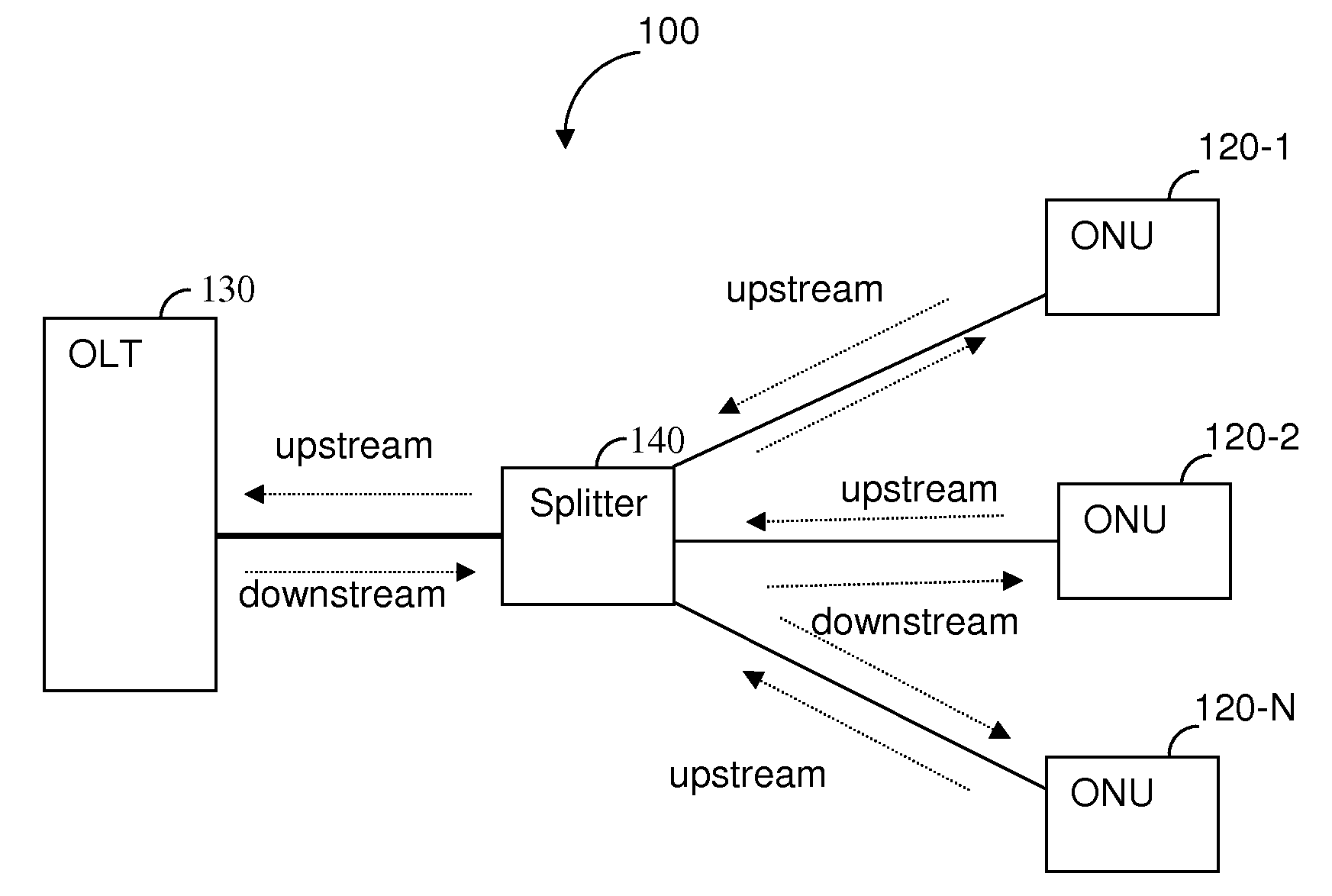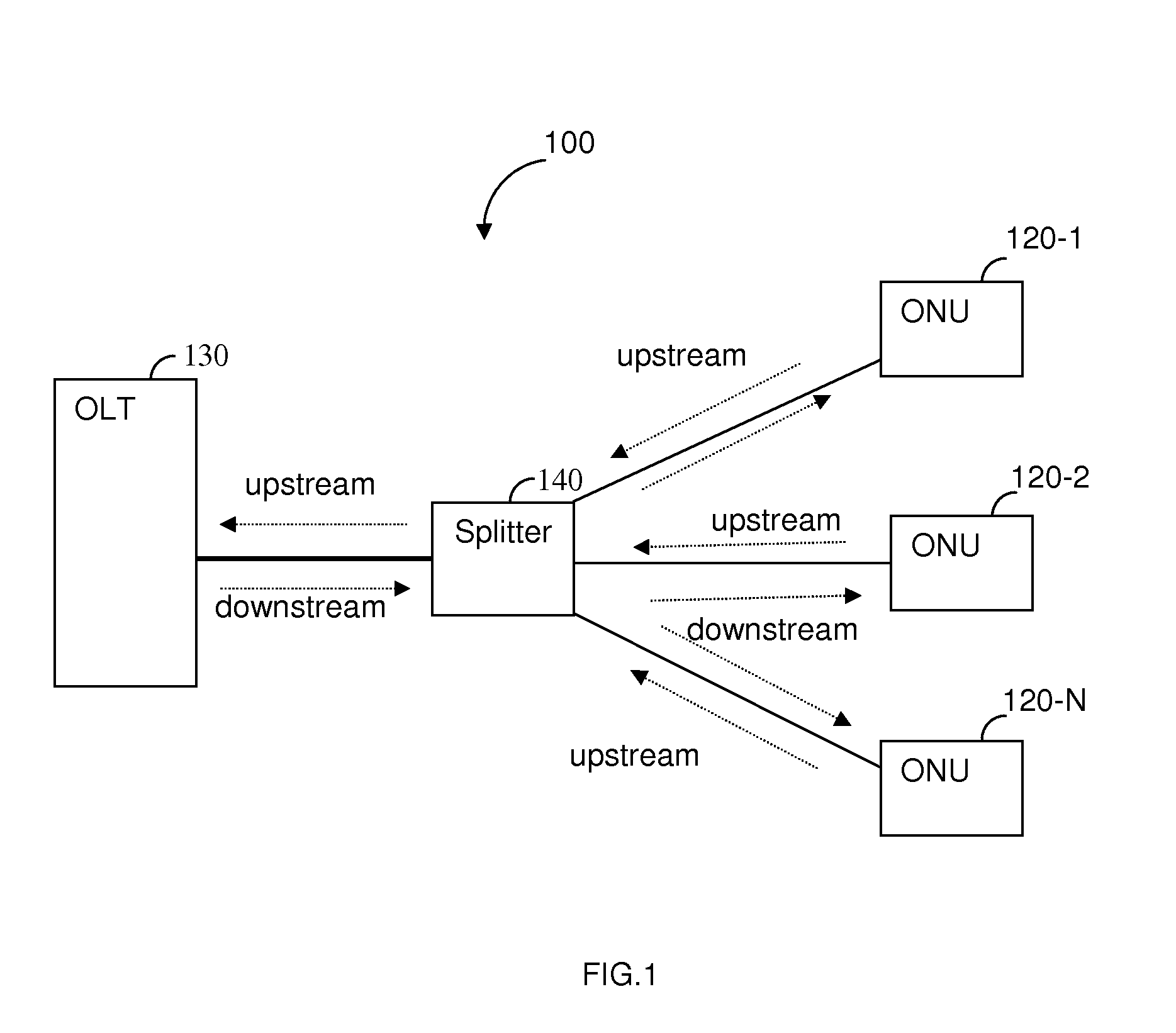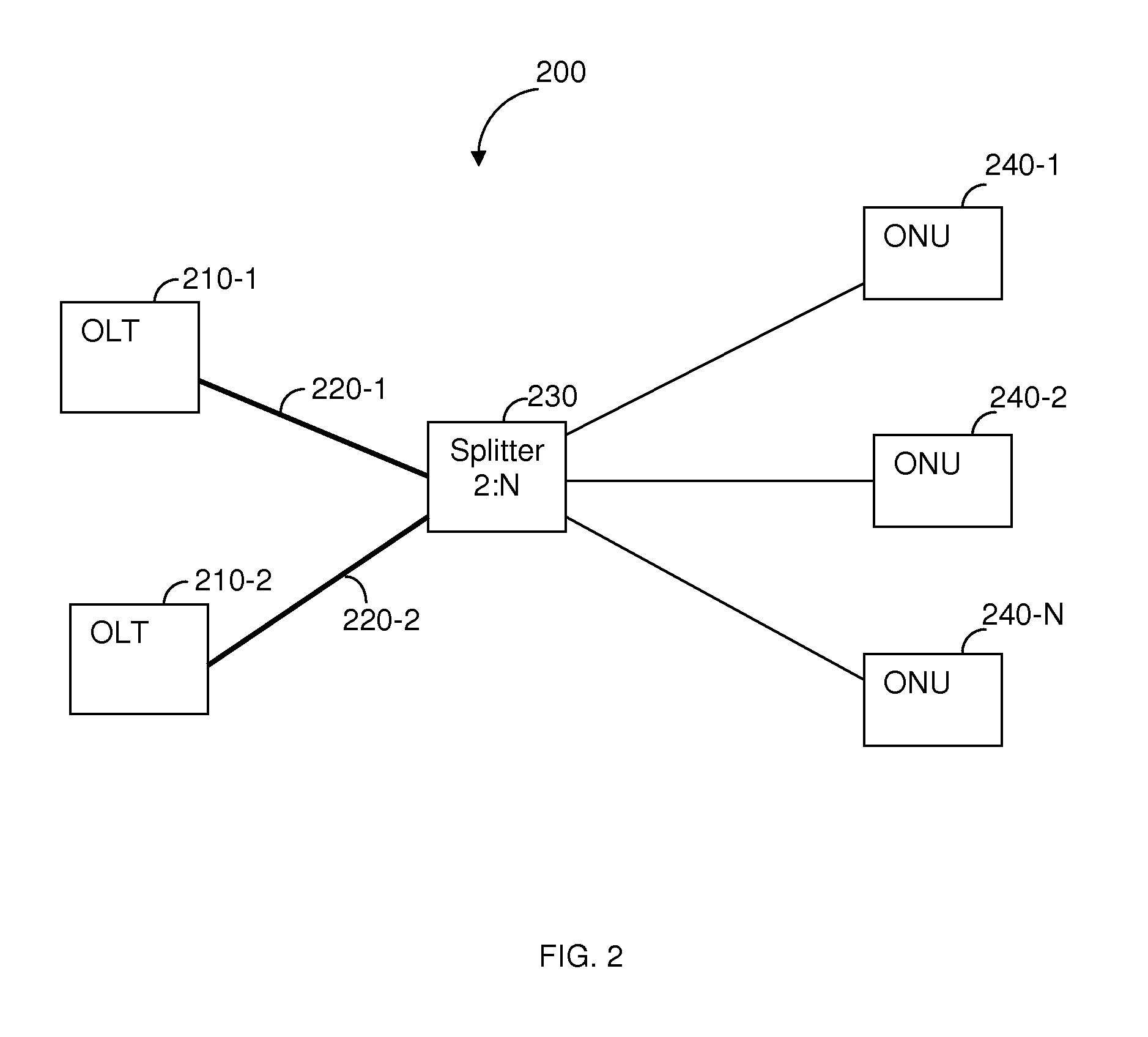Techniques for detecting optical faults in passive optical networks
a technology of optical fault detection and passive optical network, applied in the field of passive optical network, can solve the problems of long service interruption time and network topology chang
- Summary
- Abstract
- Description
- Claims
- Application Information
AI Technical Summary
Benefits of technology
Problems solved by technology
Method used
Image
Examples
Embodiment Construction
[0027]It is important to note that the embodiments disclosed are only examples of the many advantageous uses of the innovative teachings herein. In general, statements made in the specification of the present disclosure do not necessarily limit any of the various claimed inventions. Moreover, some statements may apply to some inventive features but not to others. In general, unless otherwise indicated, singular elements may be in plural and vice versa with no loss of generality. In the drawings, like numerals refer to like parts through several views.
[0028]FIG. 3 shows an exemplary block diagram of a duplex PON 300 constructed in accordance with an embodiment of the invention. The PON 300 includes two OLTs 310-1 and 310-2 respectively coupled to a splitter 321-1 or 321-2 via optical links (e.g., optical fibers) 330-1 and 330-2. The splitters 321-1 and 321-2 are coupled to a number of N ONUs 340-1 to 340-N (collectively ONU 340) where a single optical link connects the splitter and e...
PUM
 Login to View More
Login to View More Abstract
Description
Claims
Application Information
 Login to View More
Login to View More - R&D
- Intellectual Property
- Life Sciences
- Materials
- Tech Scout
- Unparalleled Data Quality
- Higher Quality Content
- 60% Fewer Hallucinations
Browse by: Latest US Patents, China's latest patents, Technical Efficacy Thesaurus, Application Domain, Technology Topic, Popular Technical Reports.
© 2025 PatSnap. All rights reserved.Legal|Privacy policy|Modern Slavery Act Transparency Statement|Sitemap|About US| Contact US: help@patsnap.com



